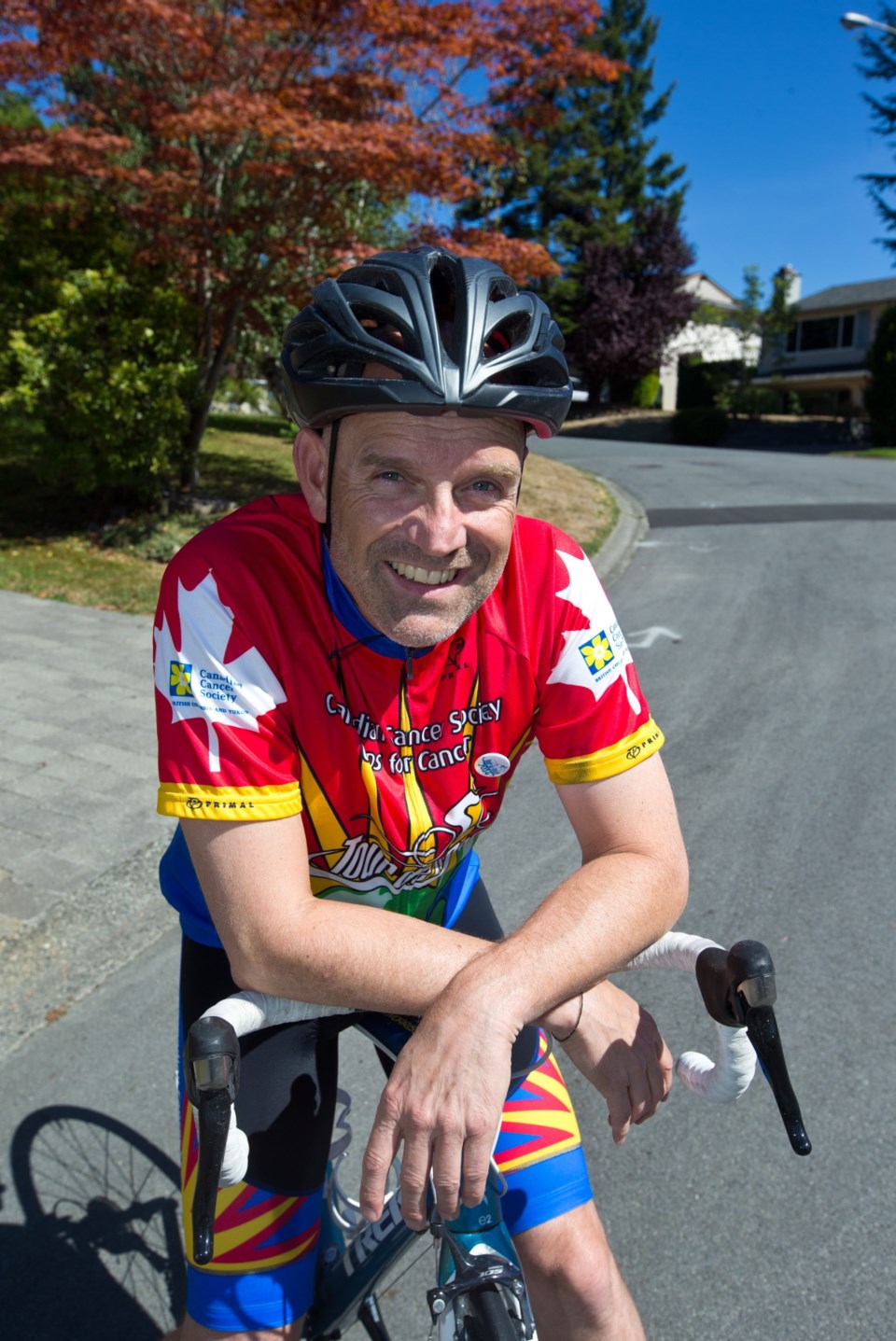Among the unintended casualties of the war between the government and B.C.’s teachers: the Tour de Rock.
Schools, public and private, are a big part of the annual Cops for Cancer ride. Not only do they contribute a big chunk of the money raised to fight childhood cancer — about $250,000 of last year’s $1.2 million total — but the joyful, deafening, unbridled enthusiasm encountered at school stops serves as rocket fuel to the cyclists as they criss-cross Vancouver Island each fall.
Whether it be in tiny, isolated Woss Lake — a speck on the north Island map where the school’s seven students presented the rain-soaked riders with $286 last September — or Saanich’s Reynolds Secondary, which came up with a mind-blowing $101,000, kids are at the heart of the cause.
But with this year’s 1,100-kilometre journey set to begin just two weeks from today, all that is in doubt. Canadian Cancer Society organizers piecing together the Tour itinerary are drawing up a Plan A, which would include visits to 50 schools from Port McNeill to Victoria, and a Plan B, with more stops at rec centres and community halls.
Plan B would suck for Dean Norris-Jones.
The 55-year-old is a rarity, a non-cop on the Cops for Cancer team. He was invited to join this year’s ride not just as a representative of Reynolds, where he is a teacher, but of all the Island schools that contribute so much to the cause. The Year of the Schools, they’re calling it.
Too bad about the timing.
“Let’s just say the irony is not lost on me,” Norris-Jones says.
Riding the Tour is a one-shot deal — a new team is chosen each spring — so missing the chance to roll into Reynolds in triumph Oct. 3 would be tough for Norris-Jones. More importantly, it would be a blow to the cause; the cops depend on the kids for both fundraising and passion.
“We rely on the energy of all of the schools to put this event together,” says Dan Mayo, the Saanich police sergeant who co-chairs the Tour de Rock steering committee. From Woss Lake Elementary to Oak Bay High, the cyclists feed off the students. Words can’t describe the delirious roar of a room packed with kids who have just discovered how much power they have to do some good in the world.
“I can’t imagine not being able to walk into Reynolds Secondary and experience the energy they put out,” Mayo says.
Neither can Norris-Jones. His two favourite dates on the calendar are the Thursday that students gather in the school gym for a massive head shave — 125 kids, including 18 Grade 9 girls, went bald last year — and the next day when the riders roll in and are presented with Reynolds’ fundraising cheque. “I think the foundation of the gym shakes on those two days.”
Norris-Jones can take pride in this. He has been the driving force behind the school’s Tour de Rock efforts since 2005. (That was after his surgery for thyroid cancer, the same affliction that struck his wife. His father died of pancreatic cancer. It’s rare to find a family that hasn’t been touched by the disease, he says.)
Since then, the cause has taken on a life of its own. “The Tour de Rock is woven into the fabric and the culture of our school,” he says.
Fundraising is concentrated in the last two weeks of September: head shaves, car washes, bake sales, whatever. “One of the mantras around the school is: One Cupcake at a Time.” Last year, two girls brought an old junker car into the parking lot, where their peers paid to smack it with a sledgehammer.
Teachers and other staff play a big role — almost all the men shave their heads each autumn. Still, it’s the students who are at the heart of it all. “They own it.”
In the past nine years, the Reynolds community has raised a staggering $470,000.
So, yes, it’s understandable that everyone at the Tour de Rock is keen on seeing a quick resolution to the strike. They’re not blaming anyone, are keen to stay out of the fray — but in the Year of the Schools, it would be nice to have schools to go to.



